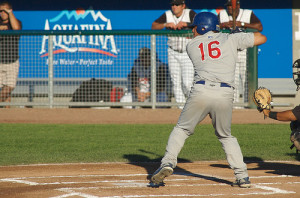
With high school baseball and softball seasons on the horizon, players will soon be picking up bats, gloves, and balls to start honing their skills before competition begins. Up until this year, however, one seemingly simple way to improve performance—the use of video recording—hasn’t been allowed by the National Federation of State High School Associations. But with virtually everyone from the concession stand vendors to the players in the dugout and the fans in the bleachers having constant access to smartphones and tablets, there’s no way around the fact that each at bat is likely to be recorded and analyzed later.

NFHS Rule 3-3-1 Allows Use of Video During Games
When the NFHS passed Rule 3-3-1 last June, it made 2015 the first season in which high school baseball and softball coaches and players are allowed to record games—and even have access to this footage while the game is still being played. The use of instant replay video allows coaches to immediately see where a play went right or wrong and give players real-time feedback about their performance and where they can improve. For umpires, it means they can focus solely on what’s happening on the field, since they no longer have to police the dugouts for the use of video equipment.
Not for Instant Replay or Call Review

While Rule 3-3-1 now allows coaches and players to use cameras, tablets and smartphones to record from the dugout during games, there are still some restrictions that should be clarified. The most obvious one being that even though coaches and players are now allowed to record and watch plays as they happen, from an umpire’s standpoint it does not mean that review of instant replay is permissible during a game. Umpires are not allowed to view videotapes or replay equipment, even if a call is questionable. So, if a coach tries to show footage of an erroneous or unclear call to an umpire, the coach can be warned, restricted to the dugout, or even ejected from the game. The other main restriction is that coaches are not allowed to record video from the coaching box or anywhere else on the playing field.
Multiple Vantage Points

Rule 3-3-1 is a little complicated, but it still benefits coaches and players in several ways. In addition to allowing recording from the dugout, recording devices can also be set up in other dead-ball zones such as designated media areas, or even in the stands. If the recording device is in the stands, it can be viewed from a monitor within the dugout. But if a coach goes into the stands to view footage from the device, he will be breaking Rule 3-3-1, as it is only permissible for the footage to be viewed from dead-ball areas within the confines of the field during the game.

According to the 2015 NFHS Baseball Rule Changes list, Rule 3-3-1 will add to the evolution of the game and enhance the educational ability for a coach to provide real-time instruction to the players. With high school being such a crucial time in an athlete’s development, the ability to watch plays immediately after they occur allows baseball and softball players to actively assess their performance and make improvements as soon as the next at-bat, rather than waiting until the next practice or game.
Advancements like Rule 3-3-1 improve the overall experience for players, coaches, umpires and spectators alike, making for an exciting playing and viewing experience for everyone at the game.
photo credit: Wellington Castillo via photopin (license)

